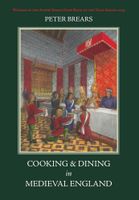Advertisement
The Boiling House
Appears in
By Peter Brears
Published 2008
From the late thirteenth and early fourteenth centuries, boiling houses or seething-places were being built close to major kitchens. Their function was to boil meat, fish and simple pottages for the bulk of the household servants who dined in the hall. In 1455, for example,

